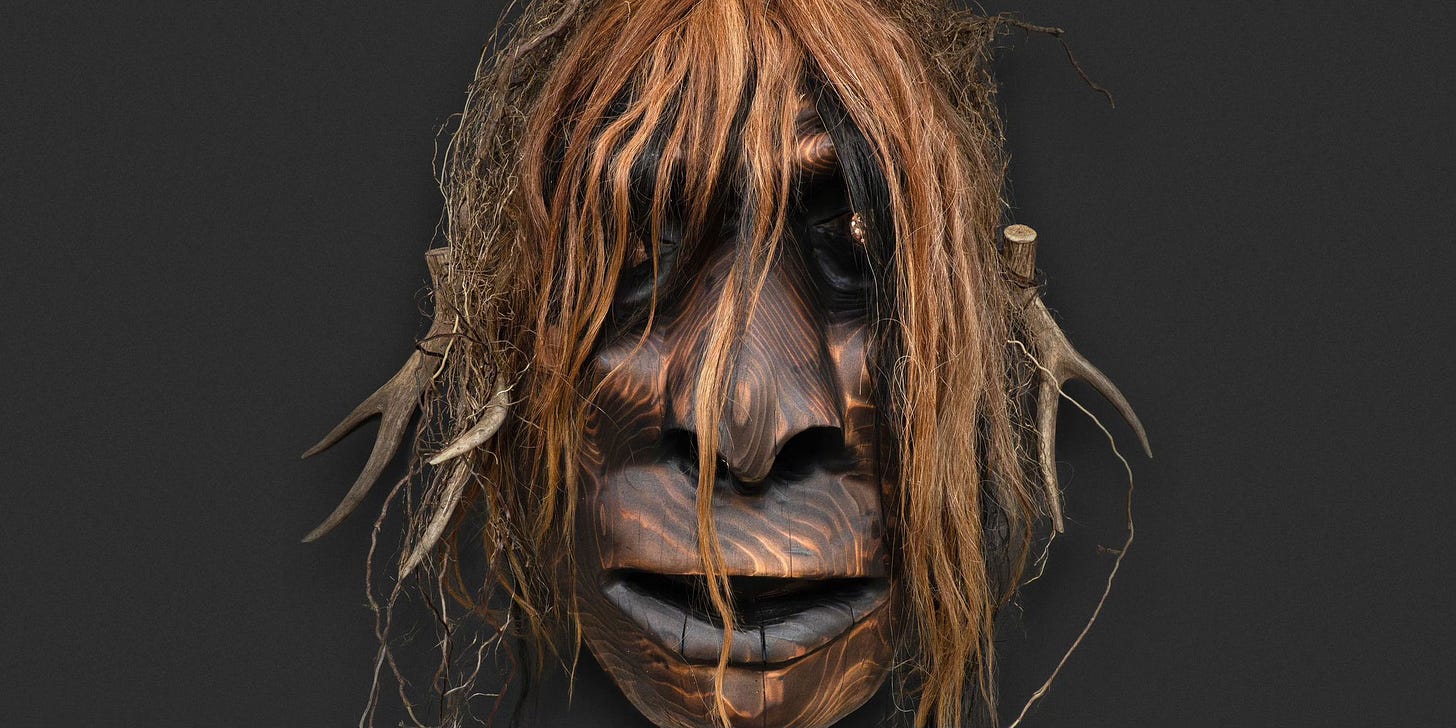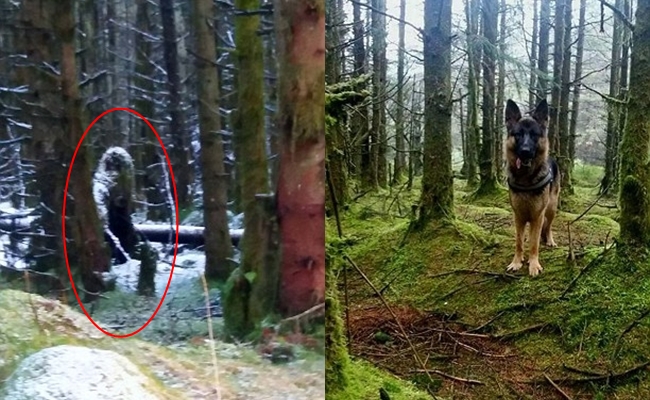Is Bigfoot really found in Native American folklore?

Five minutes from my house in Bend, Oregon is the High Desert Museum (highdesertmuseum.org), a must-stop on any visit to town. In addition to their regular exhibits which focus on the anthropological and natural history of the region, they feature special exhibits which I have always found to be of the highest quality and always worth seeing.
Their upcoming special exhibit now is called Sensing Sasquatch, featuring Bigfoot-themed art by five Native American artists. Here’s a quote from the museum’s exec director:

“Sasquatch has captivated people in the region and, indeed, throughout the world,” says Executive Director Dana Whitelaw, Ph.D. “However, what many people don’t know is that Native Americans have had deeper relationships with Sasquatch throughout time.”
I might pick a bone with his “What many people don’t know” qualifier, as the idea that Bigfoot is found in indigenous lore is trumpeted loud and clear in virtually all Bigfoot programming on TV. In the museum’s very next paragraph they give an example of this sort of messaging:
The original word for Sasquatch is “Sasq’ets,” which comes from the Halq’emeylem language of Coast Salish First Nation peoples from southwestern British Columbia. Sasquatch is bipedal and much taller than a human. Sasquatch’s habitat is often associated with the wet rainforests of the coastal Pacific Northwest, but Sasquatch also lives beyond the green, lush climate. In the High Desert region, Sasquatch strides among the dry canyonlands, ponderosa pine forests and shrublands.
The problem with this idea is that it is very rarely true. In every case I’m aware of where independent researchers tried to verify these historical claims with tribal elders and language experts, they’ve been found to be false. Modern cryptozoologists either made it up out of whole cloth in order to lend their monster unearned credibility, or they took the nearest thing they could find in the language or lore and twisted it to seem more Bigfoot like.

In two recent Skeptoid episodes, I looked at Bigfoot cases from Alaska and Florida (the Monster of Port Chatham and the Florida Skunk Ape). Both are promoted, in books and on TV, as being creatures that have long been known to the indigenous populations, complete with stories said to go back many centuries. Cryptozoologists tell us that in Alaska, nantiinaq is the word for Bigfoot. No, it’s not. Working with native speakers, we did finally track the word down (which took a long time): it’s found in the Chugach dialect of Sugpiaq Alutiiq and is borrowed from the Dena’ina word nant’ina — it refers to the man who will steal children away if they wander from their parents into the woods. Parents in most cultures have invented something similar to frighten their children into staying close. In no way can either nantiinaq or nant’ina be said to mean Bigfoot, who has never been said to steal children.
However, we can look up Bigfoot in the dictionary for the local language, Yup’ik (the dictionary is modern), and we find that there is an entry: arularaq, defined as “a legendary monster with three toes on each foot and six fingers on each hand.” Again, totally not Bigfoot — this is just the closest thing the cryptozoologists found to support their belief that the local indigenous have always known about Bigfoot. And they’ve made this argument in print often enough that it now appears in a Yup’ik dictionary; and the result is that there are now a generation of Alaska Natives growing up with the false notion that Bigfoot has long been known by their ancestors. No, they had other legends and spirits and characters from their folklore, and those traditions are now being replaced, thanks to the cryptozoologists.
We had the exact same thing happen in the Florida case. Every book on the Skunk Ape repeats the claim that the Seminole have always called it the esti capcaki which means “tall man of the woods” or something similar. Well, again, if not outright false, this is misleading. First of all you won’t find esti capcaki in any Seminole dictionary because of the unusual spelling and pronunciation conventions in Mvskoke(Muscogee)/Seminole. It’s este cvpcvke (pronounced EES-tee dzuhp-CUH-gee) and it simply refers to a man who is tall. Not a wild man, not a man of the forest; just a dude who’s tall. Chalk this one up to cryptozoologist Michael Newton, who found the closest thing he could in Seminole and decided to deceptively claim that it’s the legend the indigenous have always had.
I do not claim that no indigenous cultures had a folkloric creature that is indeed a good match for Bigfoot; I merely report than in all the cases I’ve looked at, and in all the many more cryptids my colleagues have looked at (including creatures in China, Tibet, South America, Canada, Siberia, and more), the native connection has been either made up out of whole cloth, or has been unrecognizably distorted from an actual folkloric creature.
And just as you & I grew up watching this stuff and TV and believing it, so are an increasing number of Native Americans. It’s a graffiti and a sabotage of the actual cultural traditions.
I will definitely still go to Sensing Sasquatch at the High Desert Museum. I will undoubtedly learn something.